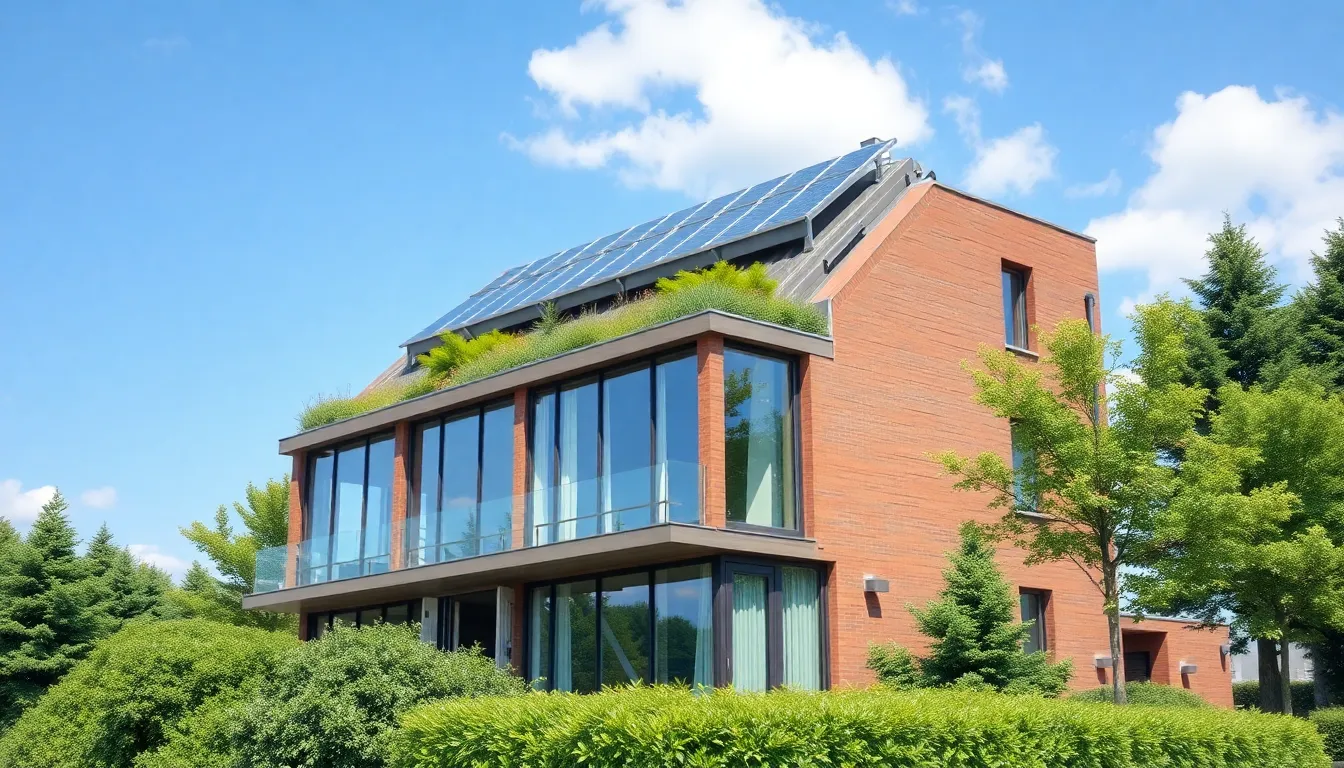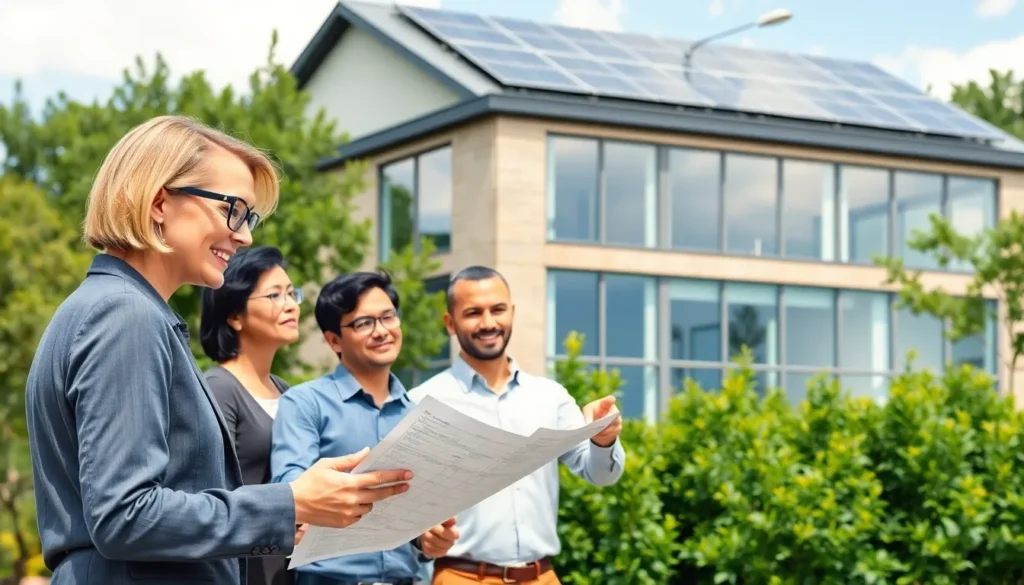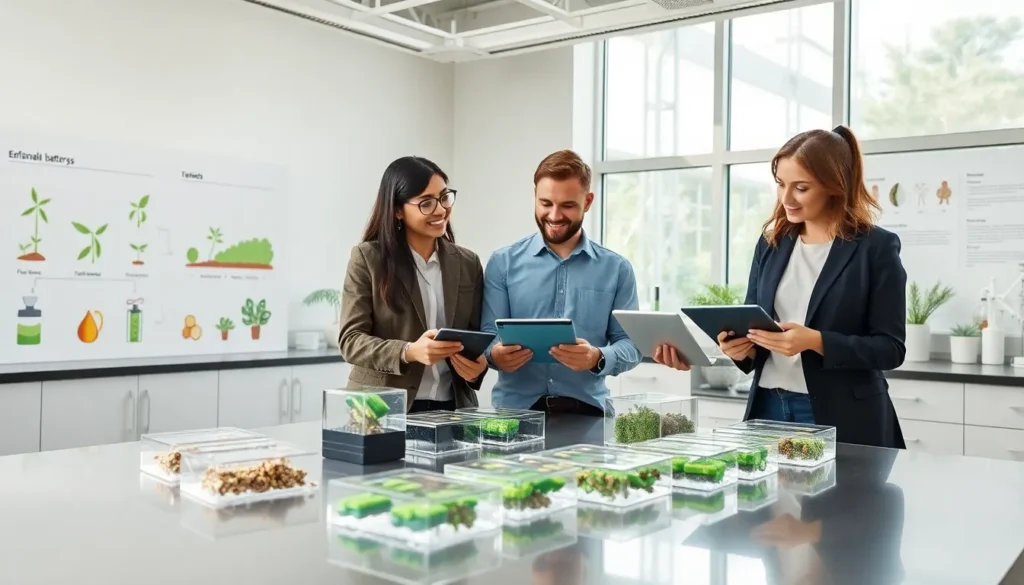Table of Contents
ToggleIn a world where energy bills can feel like a second mortgage, energy-efficient building systems are the superheroes we didn’t know we needed. They swoop in, saving the day by slashing utility costs and reducing environmental impact. Imagine a building that not only keeps you cozy but also helps Mother Earth breathe a little easier. Sounds like a win-win, right?
Overview of Energy-efficient Building Systems
Energy-efficient building systems encompass technologies and methods designed to reduce energy consumption in structures while maintaining occupant comfort. These systems often include advanced heating, ventilation, air conditioning (HVAC) systems, which optimize energy use through smart controls and variable-speed fans. Additionally, insulation materials play a crucial role, minimizing heat transfer and maintaining stable indoor temperatures.
Lighting systems contribute significantly to energy efficiency. LED fixtures consume less energy than traditional incandescent bulbs, providing substantial energy savings. Incorporating daylighting strategies, such as large windows or skylights, enhances natural light utilization, further reducing reliance on artificial lighting.
Solar panels represent another vital component of energy-efficient building systems. By harnessing renewable solar energy, these systems can significantly lower electricity costs while minimizing carbon footprints. Energy storage systems also facilitate this approach by allowing buildings to store excess energy for use during peak demand times.
Water conservation technologies, such as low-flow fixtures and rainwater harvesting, complement energy-efficient systems. These technologies help reduce water waste while lowering energy costs associated with water heating.
Overall, energy-efficient building systems integrate various technologies and strategies aimed at reducing overall resource consumption. Their implementation not only benefits the environment but also leads to significant cost savings for building owners. Each system contributes to a holistic approach to building design that prioritizes efficiency and sustainability.
Benefits of Energy-efficient Building Systems

Energy-efficient building systems offer multiple advantages, making them essential in modern construction. These benefits range from cost savings to significant environmental impacts.
Cost Savings
Lower utility bills result from energy-efficient systems. For example, advanced HVAC units reduce energy consumption, leading to substantial financial savings over time. Owners often report up to 30% reductions in energy expenses. Additionally, energy-efficient lighting solutions, such as LED fixtures, consume less power. Long-lasting fixtures decrease replacement frequency, saving money on maintenance. Overall, initial investments in energy efficiency often yield quick returns through reduced operational costs.
Environmental Impact
Energy-efficient building systems significantly contribute to environmental sustainability. They lower greenhouse gas emissions through reduced energy consumption, which diminishes reliance on fossil fuels. Implementing solar panels, for instance, generates renewable energy and decreases carbon footprints. Moreover, effective insulation materials minimize heating and cooling needs, further cutting energy demands. Water conservation technologies, including low-flow fixtures, enhance resource efficiency. Collectively, these measures help preserve natural resources and promote a healthier planet.
Key Components of Energy-efficient Building Systems
Energy-efficient building systems rely on several key components that work together to enhance performance and reduce environmental impact. Understanding these elements contributes to effective energy conservation in buildings.
Insulation and Windows
Effective insulation prevents heat loss during winter and heat gain during summer. Materials, such as foam boards and cellulose, excel in providing superior thermal resistance. Energy-efficient windows, equipped with double or triple glazing, reduce heat transfer significantly. Low-emissivity coatings on glass further improve energy efficiency. Selecting the right combination of insulation and windows lowers heating and cooling demands, ultimately reducing energy bills.
HVAC Systems
Advanced HVAC systems significantly improve energy efficiency by optimizing temperature control. Variable refrigerant flow systems adjust cooling and heating capacity according to demand, maximizing comfort. Smart thermostats enhance efficiency by learning occupant behavior and adjusting settings accordingly. Regular maintenance of these systems ensures peak performance, extending their lifespan and reducing costs associated with heating and cooling.
Renewable Energy Sources
Renewable energy sources, such as solar panels and wind turbines, provide sustainable alternatives to traditional energy. Solar panels capture sunlight and convert it into electricity, often leading to reduced utility costs. Wind turbines generate power through wind energy, contributing to a greener energy mix. Implementing these technologies not only minimizes carbon footprints but also supports energy independence for buildings, promoting a sustainable energy future.
Design Strategies for Energy-efficient Buildings
Design strategies play a crucial role in creating energy-efficient buildings. Utilizing effective approaches reduces energy consumption while enhancing comfort.
Passive Design Principles
Passive design principles focus on maximizing natural resources. They include site orientation, window placement, and thermal mass utilization. For instance, positioning windows for optimal daylighting reduces reliance on artificial lighting. Incorporating overhangs helps manage solar gain, improving comfort and lowering cooling costs. Using insulated building materials prevents heat loss, ensuring consistent indoor temperature. Overall, passive design promotes sustainability and efficiency throughout the building’s life cycle.
Smart Technology Integration
Smart technology integration enhances energy efficiency in modern buildings. Automated systems adjust lighting and HVAC settings based on occupancy and environmental conditions. Smart thermostats optimize temperature control, reducing energy waste. Real-time energy monitoring enables users to identify consumption patterns and make informed adjustments. Including energy-efficient appliances further complements these technologies, leading to significant cost savings. Embracing smart solutions connects innovation with sustainability, creating a seamless user experience while minimizing environmental impact.
Energy-efficient building systems represent a transformative approach to modern construction. By integrating advanced technologies and sustainable practices, these systems not only reduce operational costs but also foster a healthier environment. The emphasis on renewable energy sources and smart technology enhances efficiency and comfort, making buildings more adaptable to changing needs. As awareness grows about the benefits of energy efficiency, more building owners are likely to invest in these solutions. This shift not only leads to significant savings but also contributes to a more sustainable future for generations to come. Embracing energy-efficient building systems is a step toward responsible stewardship of resources and a commitment to environmental well-being.




